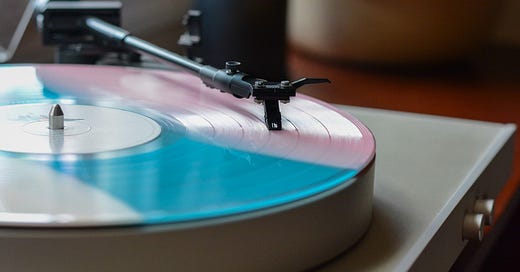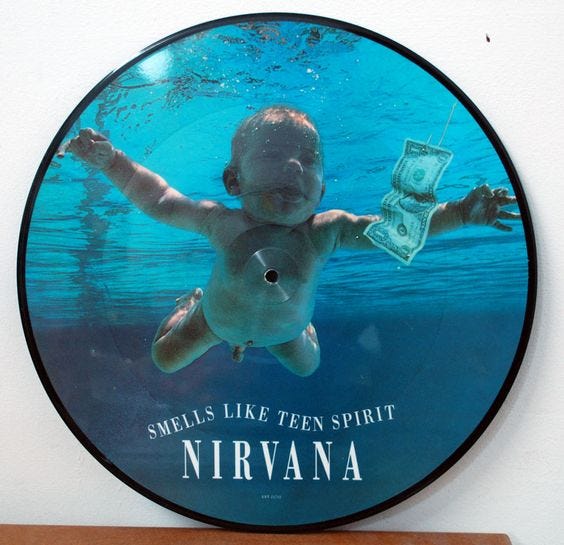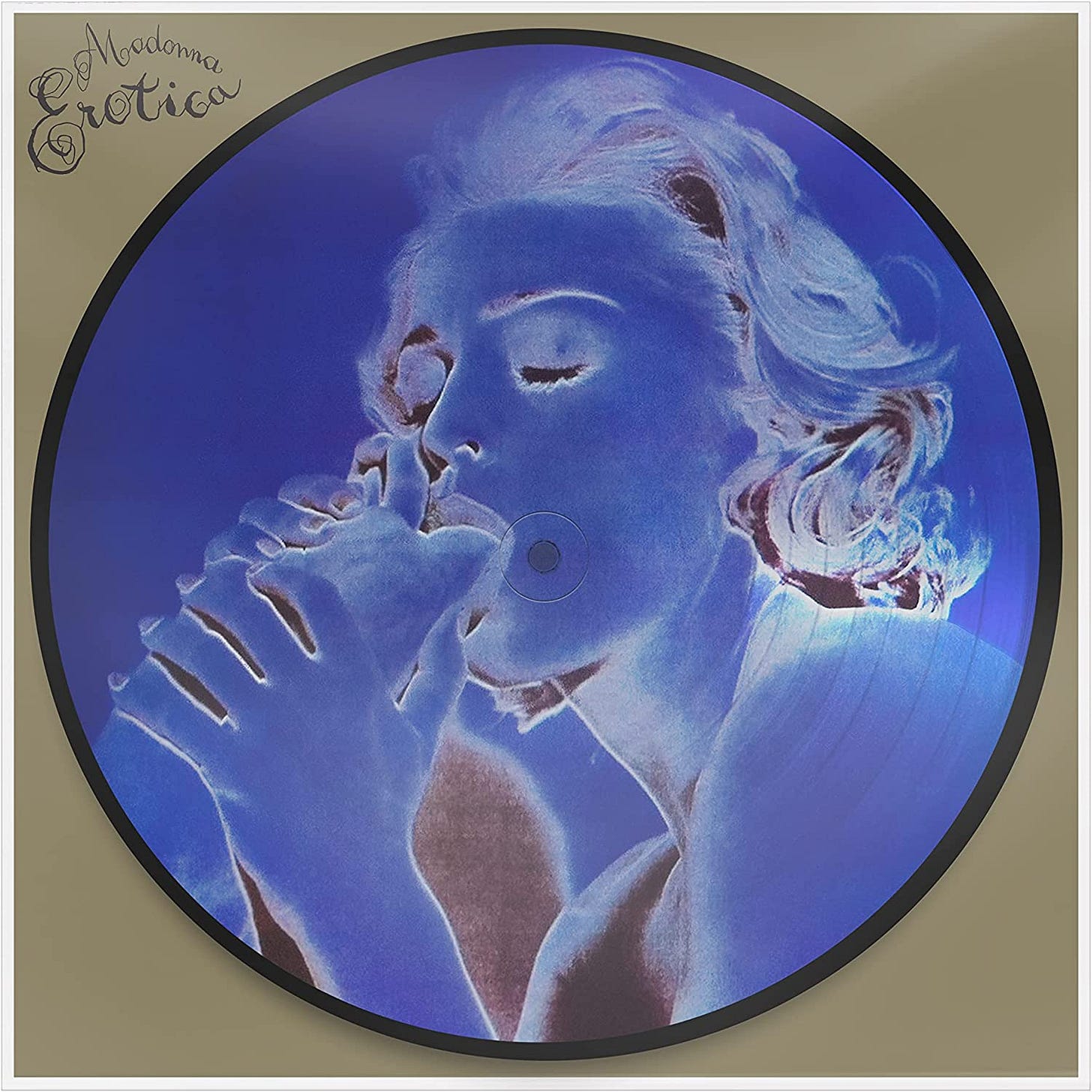Coloured vinyl and picture discs: resale value
They can sell for exorbitant prices compared with their black counterpart, but life can give you surprises, so you should never judge a record's resale value solely by its colour.
The dynamics of supply and demand have affected the price of goods and services since time immemorial. Vinyl records are no exception.
As with many other assets, there are certain idiosyncrasies specific to vinyl, and it’s true that overall market conditions tend to trigger fluctuations in value. In essence, though, a record’s resale value is typically determined by a very simple (yet often overlooked) metric: how many people want a certain record versus how many copies are available for sale at any given time.
Scarcity and popularity
The scarcity or rarity factor is so prominent with vinyl that, sometimes, records with inferior sound quality or little to no visual appeal end up selling for exorbitant prices. For example, some rare test pressings, which usually come in generic sleeves (i.e. no artwork) and with mixing defects, get auctioned in the ten-thousand-dollar region. The same is true for some promo items or “samplers” that contain fewer tracks and some basic artwork (if any).
You may wonder why anyone would want to pay so much money for a record that, on the face of it, seems incomplete. The record may seem incomplete, but it’s typically someone’s collection that is being completed with its addition.
The exclusivity factor
Besides, and most importantly, music fans love the feeling of owning or having access to something special and unique because it brings them closer to their favourite band or artist in ways that, to the general public and for all intents and purposes, may seem unattainable.
In the golden years of vinyl, coloured records and picture discs were seen as a real novelty. While generally discarded by audiophiles, some collectors were captivated by their visual appeal and fresh sense of originality.
Besides, this exclusivity factor played a very important role in their marketing and development. Hence why, back in the day, coloured records and picture discs were almost always synonymous with the two magic words that never fail to put many collectors in an automatic state of euphoria: “limited edition”.
Looking good
A similar trend started developing during the first years of the vinyl revival: audiophiles were sceptical, but the general public was hooked by the enhanced visual element and the feeling of owning something exclusive.
Undeniably, social media played its part in solidifying this excitement: you only need to spend a couple of seconds searching for vinyl-related content on Instagram or TikTok to realise that coloured vinyl and picture discs will always get more likes and comments than standard black vinyl.
A growing trend
It is little surprise that the market for coloured records and picture discs started growing at an unprecedented pace. I say unprecedented because, while their existence strongly predates vinyl’s decline and subsequent revival, their availability (let alone popularity) was nowhere near today’s levels.
This is important to bear in mind when discussing resale value because, as mentioned earlier, scarcity will impact the value of records regardless of their colour. Put simply, a coloured record or picture disc from the 1970s will most likely sell for a lot more than one manufactured today.
As we have seen earlier, the sound will probably be questionable at best, but it’s the scarcity or rarity (coupled with the exclusivity factor) that will be pushing the price up.
Generally speaking, the more mainstream coloured records and picture discs become, the lower resale value they will hold. However, this does not mean that all newer coloured records and picture discs will be worthless. Once again, it will all come down to their scarcity and popularity.
Numbered editions
Some coloured records and picture discs are part of what is known as a “numbered” edition. Basically, a batch of, say, 1000 records, with each one of them being marked, usually on the back of the outer sleeve, to indicate their number in the series (e.g. 23/1000).
These records tend to be very sought after and will usually see their value increase over time as they become rarer and harder to find. Usually their starting retail price will already be higher than that of a standard record but will then skyrocket once official stores run out of stock.
Sealed isn’t always better
Another element that will have a direct impact on the resale value of a record (whether coloured or not) is the state or condition it is in (this applies to both the disc and the sleeve).
Everyone will agree that a sealed record (i.e. unopened, still in shrink) will sell for more than an identical record which may be yet unplayed but has been opened. However, some coloured records are an exception to this rule.
When artists release the same album in multiple colours, more often than not there will be one colour that will enjoy more popularity than others, particularly when the specific colour is not indicated anywhere.
I would love it if this was due to better sound quality but the reality is that, more often than not, the reason behind the upsurge in popularity of a certain colour has very little to do with sound and a lot more to do with how pretty it looks or how rare it is.
These records will sell for more when unsealed but unplayed, contrary to the general principle, as buyers will want to make sure that the specific colour is indeed the one they are after.
Scarcity again
The coloured vinyl or picture disc version of a certain album will typically be seen or regarded as some sort of special or limited edition, even if not marketed as such. This is because most people will expect the standard edition of that record to be a black vinyl version.
However, some records only get released in colour or as a picture disc. What’s more, sometimes the main edition of an album will come in a certain colour, and a black vinyl version of the same record may be issued in very limited quantities.
When this happens, if the release is popular, you can expect the black vinyl version to hold higher resale value than the main (coloured) version.
Conversely, if only one those reissues is coloured and the rest is standard black vinyl or even clear vinyl, the coloured version will typically resell for more.
Bottom line
As you can see, it is the scarcity and popularity of a record (as well as its condition) that will typically determine its fate on the resale market.
While coloured records and picture discs are generally issued as limited editions, understanding the general principle of scarcity and popularity will help you make wiser decisions if you are buying or collecting items with the resale market in mind.
That’s all for now. Thanks for reading or listening and, as always, happy spinning!












Very thorough coverage, Andy, as usual! My earliest rememberies of colored vinyl was in the '50s (I was born in '55, so the late '50s is when my bro and I would've been enjoying it), and a Bozo the Clown album (with gatefold and storybook attached within)--can't recall the title.
I looked for it online, and while I may have seen the album cover, none had the vinyl pulled out for me to verify its red (as I remember) color. If only, 60 years ago, I'd-a thunk that I might have a reason to have kept all these things for showing, even if by pix, in the 3rd decade of the following century!!!🤯